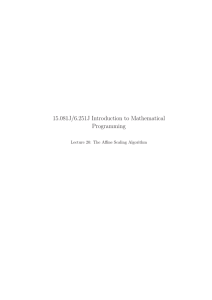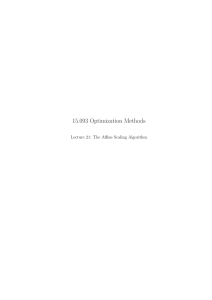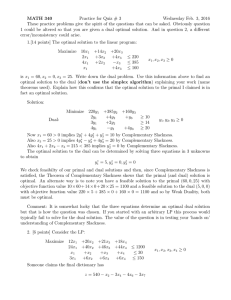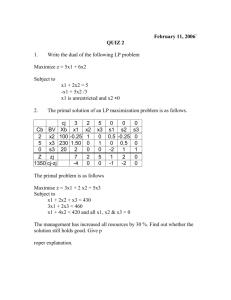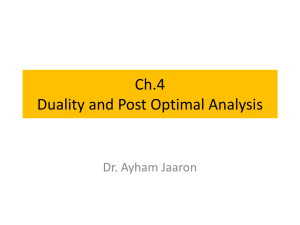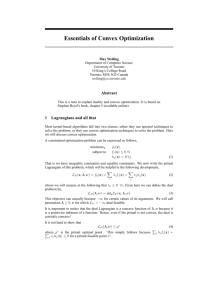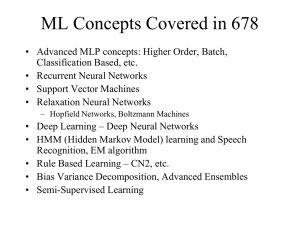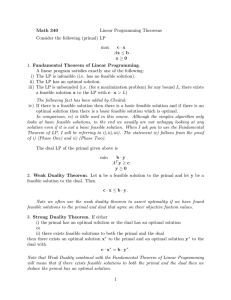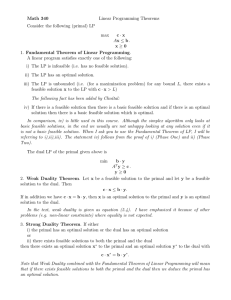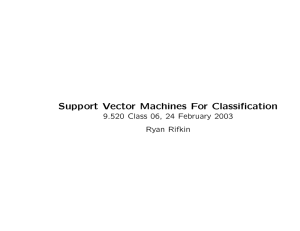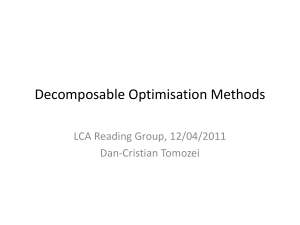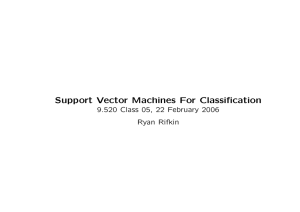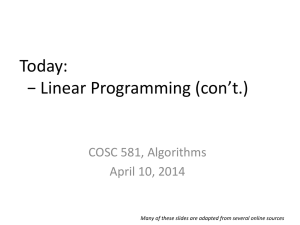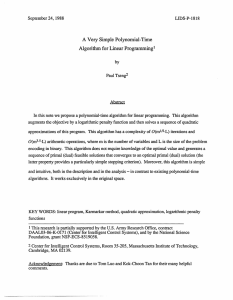slides lec13,14
advertisement
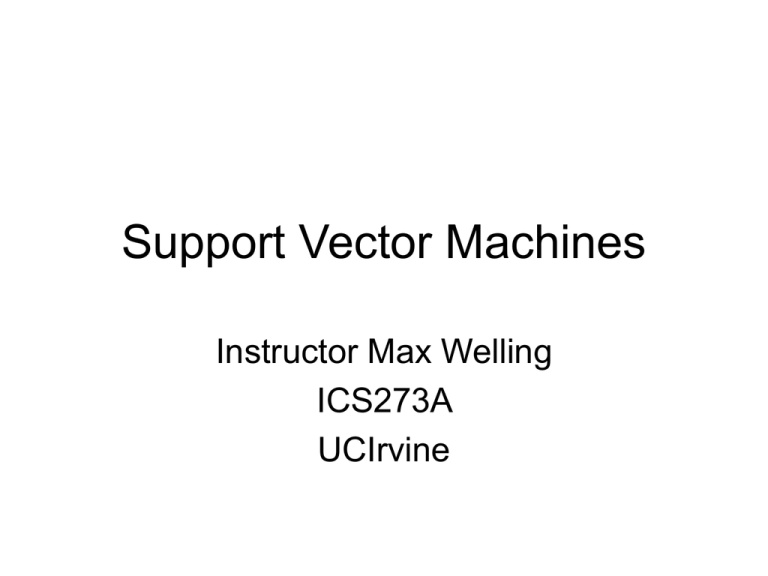
Support Vector Machines Instructor Max Welling ICS273A UCIrvine Philosophy • First formulate a classification problem as finding a separating hyper-plane that maximizes “the margin”. • Allow for errors in classification using “slack-variables”. • Convert problem to the “dual problem”. • This problem only depends on inner products between feature vectors which can be replaced with kernels. • A kernel is like using an infinite number of features. The Margin • Large margins are good for generalization performance (on future data). • Note: this is very similar to logistic regression (but not identical). Primal Problem w b || w || • We would like to find an expression for the margin (a distance). • Points on the decision line satisfy:w T x b 0 T • First imagine the line goes through the origin: w x 0 Then shift origin: w T (x a ) 0 Choose a //w b w T a || a || || w || || a || b || w || Primal Problem w b || w || • Points on support vector lines (dashed) are given by: wT x b wT x b • If I change: w w , b b, the equations are still valid. Thus we can choose 1 without loss of generality. Primal Problem w b 1 || w || b || w || b 1 b 2 • We can express the margin as: 2 || w || || w || || w || 2/||w|| is always true. Check this also for b in (-1,0). • Recall: we want to maximize the margin, such that all data-cases end up on the correct side of the support vector lines. T w xn b 1 if yn 1 2 || w || subject to n min T w ,b w xn b 1 if yn 1 Primal problem (QP) alternative derivation margin 1 || w ||2 min w ,b 2 s .t . yn (w T xn b ) 1 0 n alternative primal problem formulation Slack Variables • It is not very realistic to think assume that the data are perfectly separable. • Solution: add slack variables to allow violations of constraints: w T xn b 1 n if yn 1 n T w xn b 1 n if yn 1 • However, we should try to minimize the number of violations. We do this by adding a term to the objective: N 1 2 || w || C n min w ,b , 2 n 1 s .t . yn (w T xn b ) 1 n 0 n s .t . n 0 n Features 2 2 • Let’s say we wanted to define new features: (x ) [x , y , x , y , xy ,....] The problem would then transform to: N 1 2 || w || C n min w ,b , 2 n 1 s .t . yn (w T (xn ) b ) 1 n 0 n s .t . n 0 n • Rationale: data that is linearly non-separable in low dimensions may become linearly separable in high dimensions (provided sensible features are chosen). Dual Problem • Let’s say we wanted very many features (F>>N), or perhaps infinitely many features. • In this case we have very many parameters w to fit. • By converting to the dual problem, we have to deal with exactly N parameters. • This is a change of basis, where we recognize that we only need dimensions inside the space spanned by the data-cases. • The transformation to the dual is rooted in the theory of constrained convex optimization. For a convex problem (no local minima) the dual problem is equivalent to the primal problem (i.e. we can switch between them). Dual Problem (QP) 1 T max n n m yn ymn m 2 n ,m n s .t . y n n n 0, n [0, C ] n n 0 • The n should be interpreted as forces acting on the data-items. Think of a ball running down a hill (optimizing w over ||w||^2). When it hits a wall, the wall start pushing back, i.e. the force is active. If data-item is on the correct side of the margin: no force active: n 0 If data-item is on the support-vector line (i.e. it is a support vector!) The force becomes active: n [0,C ] If data-item is on the wrong side of the support vector line, the force is fully engaged: n C if no slack variables Complementary Slackness • The complementary slackness conditions come from the KKT conditions in convex optimization theory. n (yn (w T n b ) 1 n ) 0 • From these conditions you can derive the conditions on alpha (previous slide) • The fact that many alpha’s are 0 is important for reasons of efficiency. Kernel Trick T • Note that the dual problem only depends on n m • We can now move to infinite number of features by replacing: (xn )T (xm ) K (xn , xm ) • As long as the kernel satisfies 2 important conditions you can forget about the features v T Kv 0 v ( positive semi definite , positive eigenvalues ) K KT (symmetric ) • Examples: K pol (x , y ) (r x T y )d Krbf (x , y ) c exp( || x y ||2 ) Prediction • If we work in high dimensional feature spaces or with kernels, b has almost no impact on the final solution. In the following we set b=0 for convenience. • One can derive a relation between the primal and dual variables (like the primal dual transformation, it requires Lagrange multipliers which we will avoid here. But see notes for background reading). • Using this we can derive the prediction equation: ytest sign w T xtest sign n ynK (xtest , xn ) n SV • Note that it depends on the features only through their inner product (or kernel). • Note: prediction only involves support vectors (i.e. those vectors close to or on wrong side of the boundary). This is also efficient. Conclusions • kernel-SVMs are non-parametric classifiers: It keeps all the data around in the kernel-matrix. • Still we often have parameters to tune (C, kernel parameters). This is done using X-validation or by minimizing a bound on the generalization error. • SVMs are state-of-the-art (given a good kernel). • SVMs are also slow (at least O(N^2)). However approximations are available to elevate that problem (i.e. O(N)).



